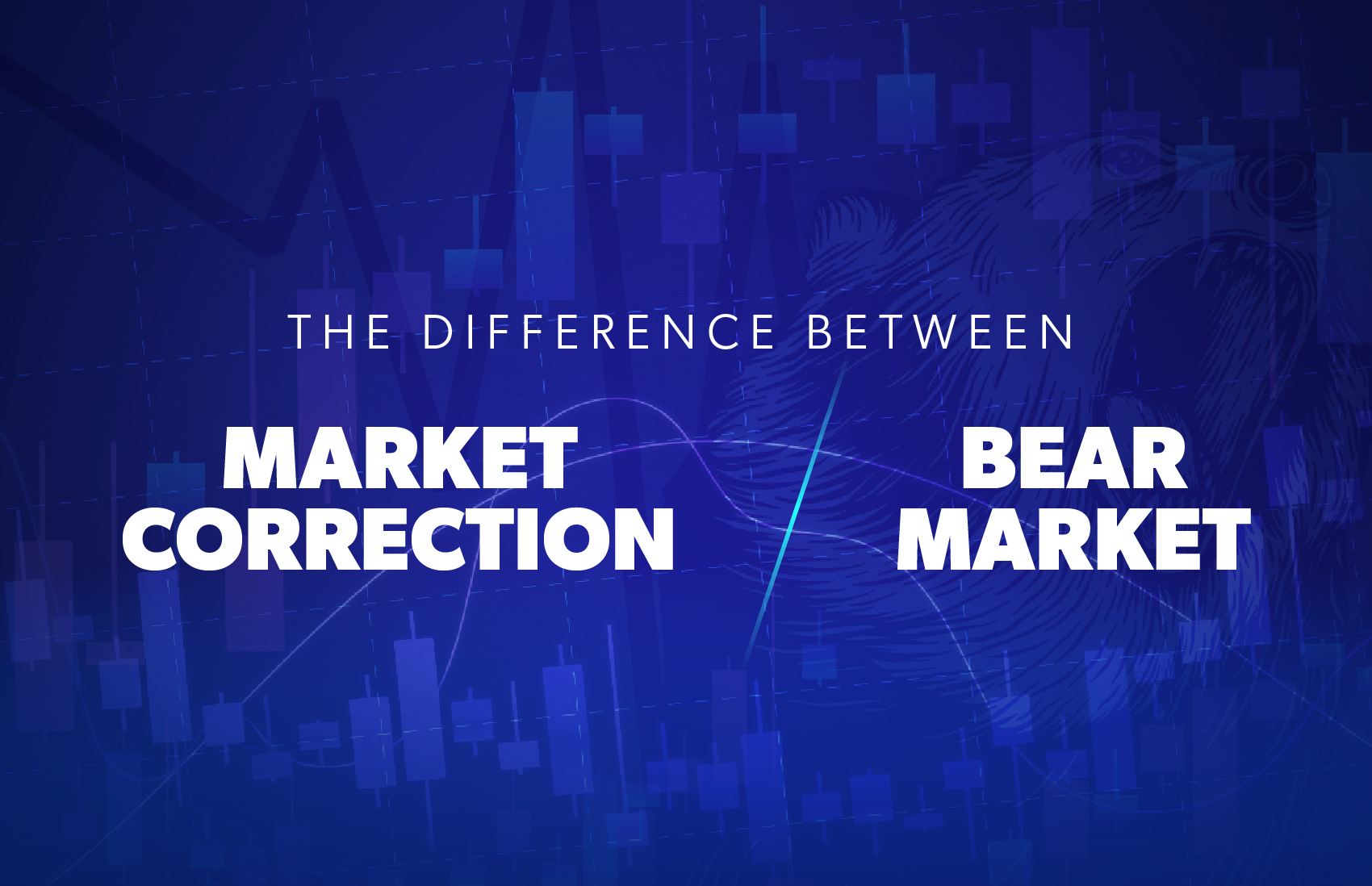Imperial College London and FluidAI Announce Groundbreaking AI Partnership! Read here 🤝

The Difference Between a Market Correction and a Bear Market
Summary
A market correction refers to an instance when the market declines by at least 10% from its most recent high, while a bear market is used to refer to a decline of over 20% over two months
A market can recover within a few months from a correction, but in a bear market situation, it takes much longer to bounce back from significant damage
Knowing key distinctions between the two can help a trader analyze market trends and make more accurate predictions

The Difference Between a Market Correction and a Bear Market
Summary
- A market correction refers to an instance when the market declines by at least 10% from its most recent high, while a bear market is used to refer to a decline of over 20% over two months
- A market can recover within a few months from a correction, but in a bear market situation, it takes much longer to bounce back from significant damage
- Knowing key distinctions between the two can help a trader analyze market trends and make more accurate predictions
Although often used interchangeably, the terms market correction and bear market hold different meanings. A market correction is when a market declines by at least 10% from its most recent high. In contrast, when a market experiences a decline of over 20% over two months, it is considered a bear market.
Many amateur traders and investors struggle to see the distinctions, and the psychological toll of observing the market decline day after day might result in impaired judgment. This is why it is important to know the key distinctions between the two so investors and traders can make well-informed decisions and traverse these events more efficiently.
This blog discusses the key differences between the two, including their frequency and length.
What is a Market Correction?
When a market is overbought or overpriced, a market correction occurs, characterized by a sudden but brief decrease in price. In general, a market correction is defined as a 10% or more decline in the market following a recent peak. The 10% threshold, however, is not a mandate. Corrections might range from a 3% decline to a 20% drop. In cryptocurrency, 5% to 10% market declines are more typical.
To put it another way, a pullback from recent highs enables the market to absorb gains and reset for a subsequent upward run.
When the economy is growing, corrections almost invariably occur due to overconfident investors driving up asset values. As corrections move prices back to the mean, this prepares the ground for a reversion to the mean.
Some of the most common triggers of market corrections include excessive speculation and investor exuberance, the fear of missing out, exchanges getting hacked, or regulatory uncertainty.
What is a Pullback?
Pullbacks are brief pauses or reversals in the overall value trend of an asset, which is a little different from corrections.
In the cryptocurrency market, pullbacks can occur numerous times during both uptrends and downtrends. Pullbacks are typically seen as a positive component of the market cycle since they give the market a chance to reset and absorb gains (or losses) before going higher (or lower).
Cryptocurrency pullbacks signify a transient reversal in which the asset’s value will only temporarily halt, grow, or fall before returning to its prior behavior.
What is a Bear Market?
A bear market refers to a lengthy period of price decline, typically accompanied by widespread pessimism. Simply put, it resembles a market correction but lasts a lot longer. Prices need to decline by 20% or more from recent highs for a market to be deemed a bear market. This number is flexible and subject to change based on market conditions, just like market corrections.
Bear markets often develop when there is an economic recession or a stock market crash, as opposed to market corrections which occur during periods of economic expansion. Any variables that lead to a market correction might also generate a bear market in cryptocurrencies.
How Long Can a Bear Market Last?
The length of a bear market might differ significantly. Bear markets can endure for years or simply a few months.
Bear markets normally last ten months on a global scale. However, there have been instances where bear markets have lasted longer. For instance, the Crypto Winter decline from 2013 to 2015 lasted 415 days or a little over a year.
Final Words
Bear markets and market corrections might seem daunting, but remember that they are common events in any robust economy. You’ll be able to navigate through them effectively if you can learn the key differences between them. Knowing the difference can also help you analyze market trends and make more accurate predictions. As a result, you can choose investments more wisely based on your investing standards and risk tolerance.
Markets often recover from corrections within a short time, often a couple of months, much faster than the average recovery time. Bear markets, however, have a significant negative influence on markets due to their longer duration and more dramatic price falls. As a result, recovering from a recent down-market might take from several months to years.













